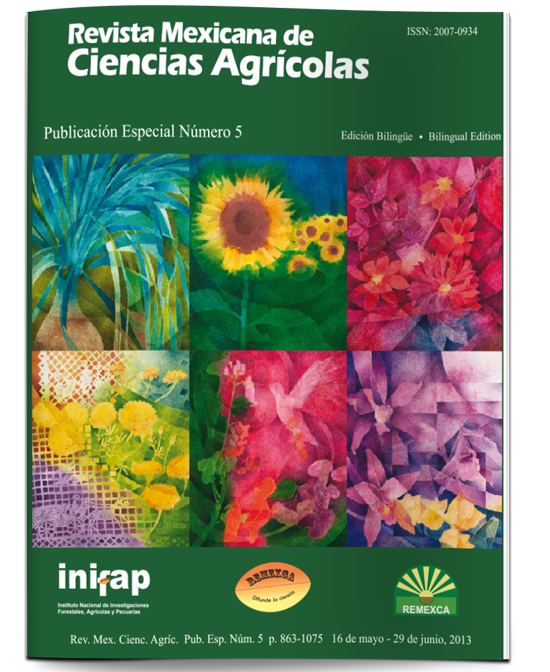Wild herbaceous species propagation with potential for landscaping
DOI:
https://doi.org/10.29312/remexca.v0i5.1309Keywords:
Centratherum punctatum, Ruellia nudif lora, Salvia coccinea, cuttings, germination, substratesAbstract
In this research we evaluated the sexual (by seed) and asexual propagation (by cuttings) of Ruellia nudiflora, Centratherum punctatum and Salvia coccinea, in different combinations of substrates based on vermicompost, peat, sand and vermiculite. Vermicompost and peat volumes ranged from 50 to 100% (v/v), while the sand and vermiculite did it from 0 to 50% (v/v). With respect to the seeds, the species that responded more efficiently to the treatments was S. coccinea, achieving up to 90% germination on substrates containing 100% vermicompost or peat, while R. nudiflora only reached 6% germination rate using 60% peat in the substrate, and C. punctatum achieved 36.6% germination in substrates with 50% vermicompost. Regarding the cuttings, C. punctatum achieved 60% of surviving in the mixture containing 80% peat, and S. coccinea only achieved 40% with 100% of peat as substrate, while R. nudif lora had no response to this treatment at all. We concluded that under the experimental conditions tested, these three species are able to spread, which is the first step in establishing protocols for their use for landscaping.
Downloads
Downloads
Published
How to Cite
Issue
Section
License
The authors who publish in Revista Mexicana de Ciencias Agrícolas accept the following conditions:
In accordance with copyright laws, Revista Mexicana de Ciencias Agrícolas recognizes and respects the authors’ moral right and ownership of property rights which will be transferred to the journal for dissemination in open access. Invariably, all the authors have to sign a letter of transfer of property rights and of originality of the article to Instituto Nacional de Investigaciones Forestales, Agrícolas y Pecuarias (INIFAP) [National Institute of Forestry, Agricultural and Livestock Research]. The author(s) must pay a fee for the reception of articles before proceeding to editorial review.
All the texts published by Revista Mexicana de Ciencias Agrícolas —with no exception— are distributed under a Creative Commons License Attribution-NonCommercial 4.0 International (CC BY-NC 4.0), which allows third parties to use the publication as long as the work’s authorship and its first publication in this journal are mentioned.
The author(s) can enter into independent and additional contractual agreements for the nonexclusive distribution of the version of the article published in Revista Mexicana de Ciencias Agrícolas (for example include it into an institutional repository or publish it in a book) as long as it is clearly and explicitly indicated that the work was published for the first time in Revista Mexicana de Ciencias Agrícolas.
For all the above, the authors shall send the Letter-transfer of Property Rights for the first publication duly filled in and signed by the author(s). This form must be sent as a PDF file to: revista_atm@yahoo.com.mx; cienciasagricola@inifap.gob.mx; remexca2017@gmail.
This work is licensed under a Creative Commons Attribution-Noncommercial 4.0 International license.



